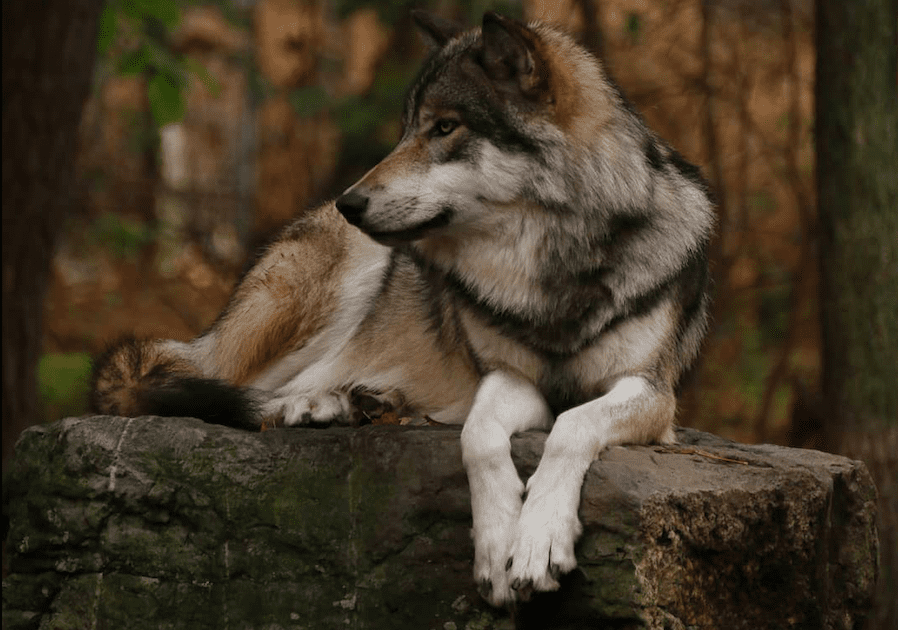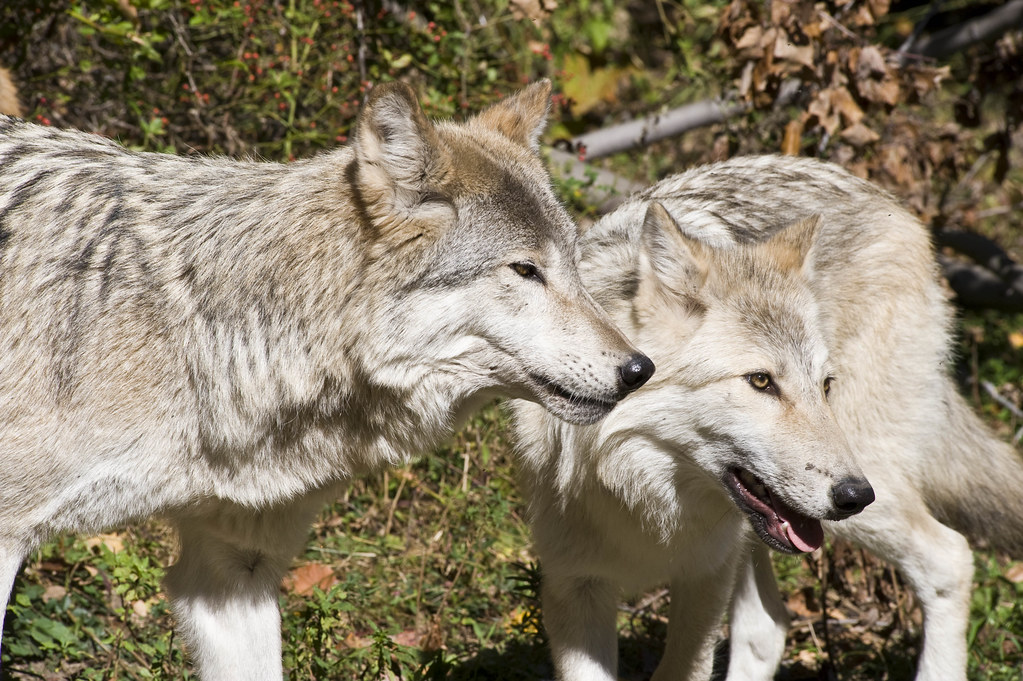The sound of howling wolves in the distance is oftentimes ominous and unnerving. However, at Lakota Wolf Preserve, it’s an everyday routine. Located in Columbia, New Jersey, this non-profit wolf preserve offers educational guided tours, photography sessions, and options to see bobcats and foxes. Visitors can walk along the mountains of the Delaware Water Gap in Knowlton Township to witness all four of their wolfpacks. It’s the perfect destination to experience wildlife in its natural, sustainable habitat.
The Lakota Wolf Preserve
For decades, wolves have eluded the Northeast. Due to warmer temperatures, farming, and hunting, these majestic creatures have resorted to habitats in the Northwest tundras and forests of Michigan, Wyoming, and Minnesota. While their howls are loud and tantalizing, they haven’t reached New Jersey in over a hundred years. These realities make the Lakota Wolf Preserve’s preservation all the more impressive––and important––for bringing wolves back east.
The Lakota Wolf Preserve is a highly renowned non-profit organization that cares for four different wolf packs, along with other animals like bobcats and foxes. Named after their first and favorite wolf, Lakota translates to “friend,” showing alliance to their protected animals. Jim Stein and Becky Mace, who’s worked with all of the preserve’s animals, own and operate the organization. The preservation is one of a kind in New Jersey, not to mention the largest in the Northeastern U.S.
Aside from caring for the wolf packs and surrounding wildlife, the Lakota Preserve offers educational tours, photo opportunities, and a chance to watch the animals in a natural environment for the first time in over a century.
Their Mission
More than 25 years ago, a wildlife photographer named Dan Bacon became enveloped in the beauty of wolves. He spent most of his time in Colorado, raising several pups and snapping the perfect pictures. Eventually, with 850 poles and three rows of fences, he started a preservation project.
Jim Stein later received full ownership of Bacon’s reserve, caring for the wolves and allowing locals to witness their beauty. Struck by their magnificent, he started the Lakota Wolf Preserve, raising the packs present today. Brimming with wonder and amazement, Stein hoped to care for and sustain the wolves, letting them once again return to their home in the Northeast.
To support Lakota’s mission in preserving the wolf packs of New Jersey, guests and interested parties can donate or join their sponsorship program to become a Wolf Watcher. As a sponsor, you’ll support the costs of feeding, caring for, and treating the wolves. You can also simply visit and experience the animals and organization in person.
Educational Tours
The educational tours, called Wolf Watches, require visitors to make reservations. However, the wait is far worth the experience. Upon arriving for their tour, guests can enter an observation area at the center of the four wolf packs. There, visitors learn about the caretakers’ roles in maintaining the animals and their habitat from firsthand experience. In addition, tourists are educated on wolf packs’ social structures, eating habits, human interactions, and behavioral patterns––all while watching the animals in person. Listen to the wolves howl, watch them play, and experience their social interactions to instill new meaning towards their lifestyle and importance to the ecosystem.
From the observation area, guests are invited to walk along paths through the preservation. Walking through one of the first natural habitats for wolves in the Northeast’s recent history provides a once-in-a-lifetime experience. As you trek along the scenic mountains and woods, you may even hear a wolf howl in the distance––not to mention glimpse a lynx hidden among the trees.
Overall, the New Jersey preservation transports its guests to a world outside the Northeast.
Meeting the Wolves
The various wolf packs include 10 timberwolves, five arctic, three tundras, and three young British Columbians in the four separate compounds. There’s also an area for bobcats, foxes and wolf pups, reserved for their weaning and “socialization” period where they’ll develop and mature.
Every wolf was born and raised in captivity here, though each retains its true, wild nature. Yet, despite their lack of domestication, the animals have learned to bond with humans, especially those caring for the preservation. Because of this, the wolves are comfortable enough to remain near observation areas with people. Had the caretakers not socialized the pups, they would likely live and remain hidden in the far reaches of their compounds.
This socialization also makes photography opportunities possible. Without the Lakota Wolf Preservation, New Jersey nature lovers and aspiring photographers would travel to Alaskan tundras or heavily wooded Wyoming forests for the perfect shot. Luckily, however, these welcoming animals make for an ideal muse. From professionals to amateurs, hundreds of visitors have come to Lakota to capture their wolves’ beauty.
Wolf Facts
At Lakota Preserve, the wolves consume about 30,000 pounds of meat each year. For the most part, they’re fed a roadkill diet of mostly deer. So, you can thank these packs for keeping New Jersey’s streets clear! To pack a real punch, the wolves can exert 1,700 pounds of jaw pressure with one bite, which is more than twice the force of a domesticated dog. But what they can do with their vocals is even more impressive.
A wolf’s howl is similar to a human voice––each one is unique and identifiable. If one of them howls, the rest of the pack will know which member it is. Even more interesting, their howls can change pitches depending on their threat. If there’s an imminent invader, the pack can alter their howl to increase their intimidation, making it sound like there are more members than there are.
Finally, wolves are immensely durable creatures. Weighing about 110 pounds, their average length is six and a half feet long from head to tail. Their double layer of fur makes it easier to withstand lower temperatures, shedding in warmer seasons and thickening in cold climates. The outside layer protects against snow and rain, while the inner one insulates the wolf’s body. Despite all that fluff, they can still sustain a run of 35 miles per hour.
Main image via @lakotawolfpreserve
Have you visited the Lakota Wolf Preserve? Tell us about it in the comments!
About the Author/s
Mary Sparago is 22-year-old creative writing and policy enthusiast who's always looking for new dogs to pet. In her spare time, Mary enjoys listening to K-pop and playing video games.




